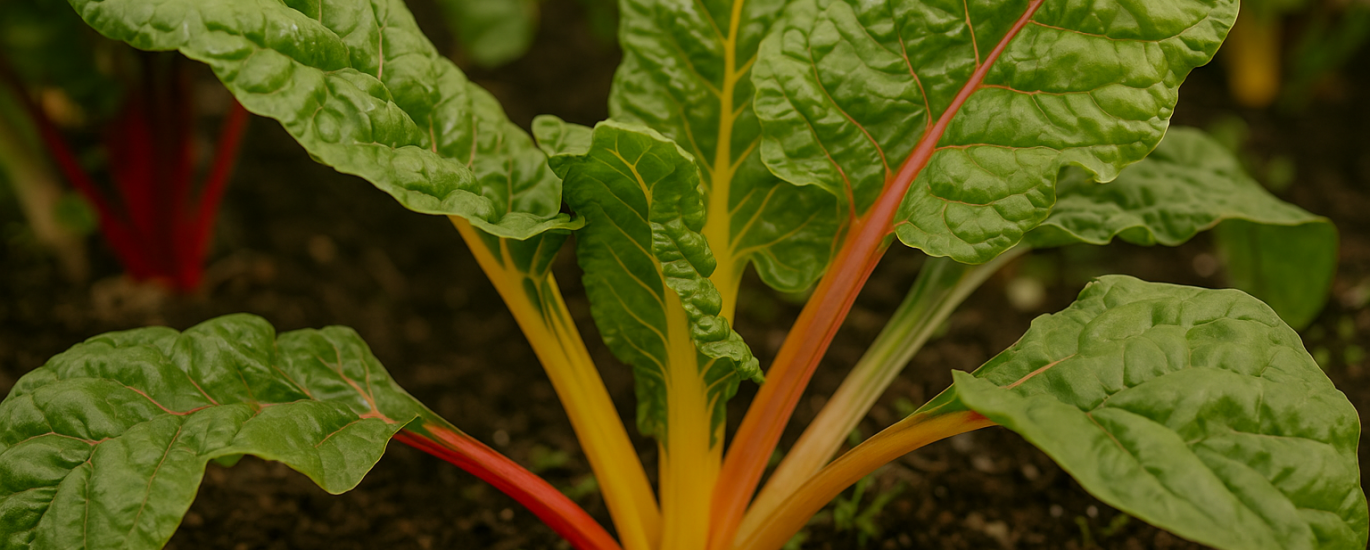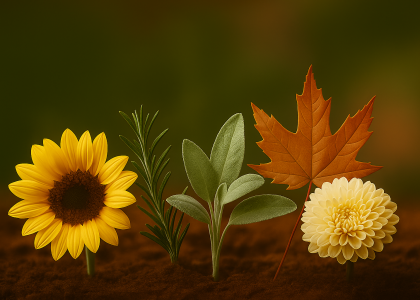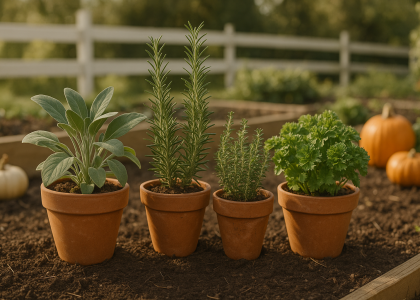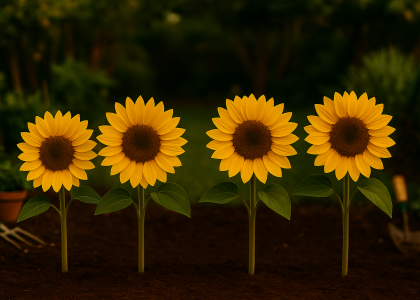Swiss Chard (Beta vulgaris subsp. cicla), often simply called chard, is one of the most stunning and versatile leafy greens you can grow. With its glossy green leaves and brightly colored stems (red, yellow, orange, even pink), it offers both nutritional value and ornamental beauty—a true win-win for balcony and garden growers.
Why Grow Swiss Chard?
- Hardy & long-lasting: Unlike spinach, it doesn’t bolt quickly and produces for months.
- Colorful beauty: Rainbow stems make your balcony look like a mini edible flower bed.
- Cold- and heat-tolerant: Survives mild frost and tolerates summer heat better than many greens.
- Nutrient powerhouse: Packed with vitamin A, K, magnesium, and antioxidants.
Healing Note: Caring for Swiss chard is like having a “living rainbow” on your balcony—reminding you of resilience, brightness, and balance even through changing seasons.
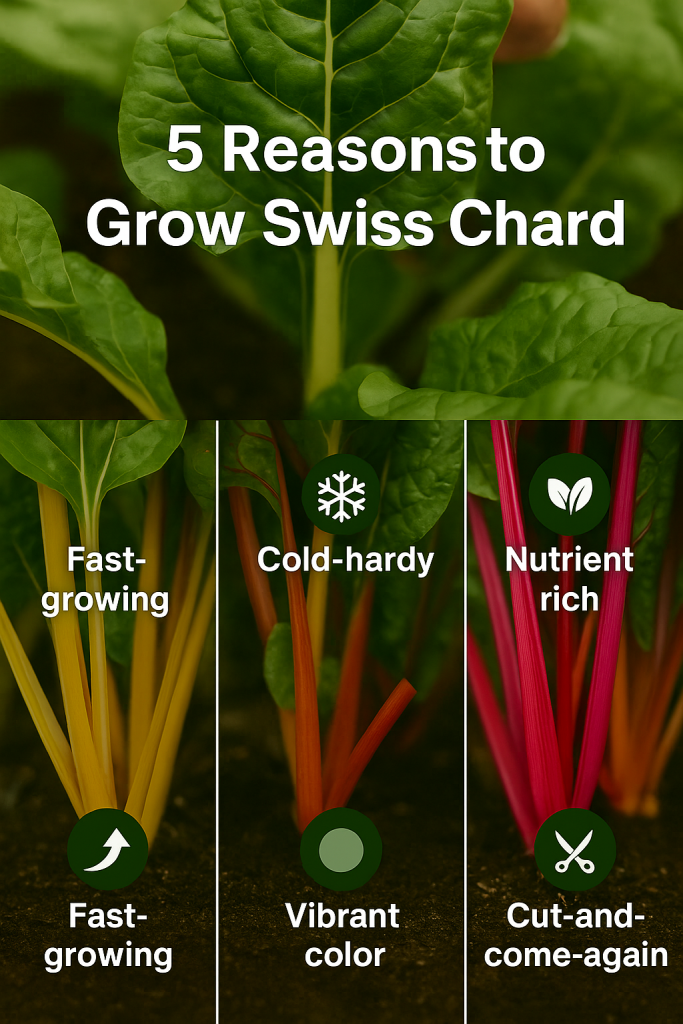
Planting & Growing Tips
1. When to Plant
- Spring & Fall: Direct sow outdoors once soil warms (50–60°F / 10–15°C).
- Succession sowing: Plant every 2–3 weeks for a steady supply.
2. Soil & Light
- Soil: Fertile, well-draining, with compost or organic matter.
- Light: Full sun for best colors; partial shade helps in hot summers.
3. Sowing & Spacing
- Sow seeds ½ inch deep, 4–6 inches apart.
- Thin seedlings to encourage strong growth.
4. Watering
- Water regularly—drought makes leaves tough.
- Mulching helps retain soil moisture and keeps roots cool.
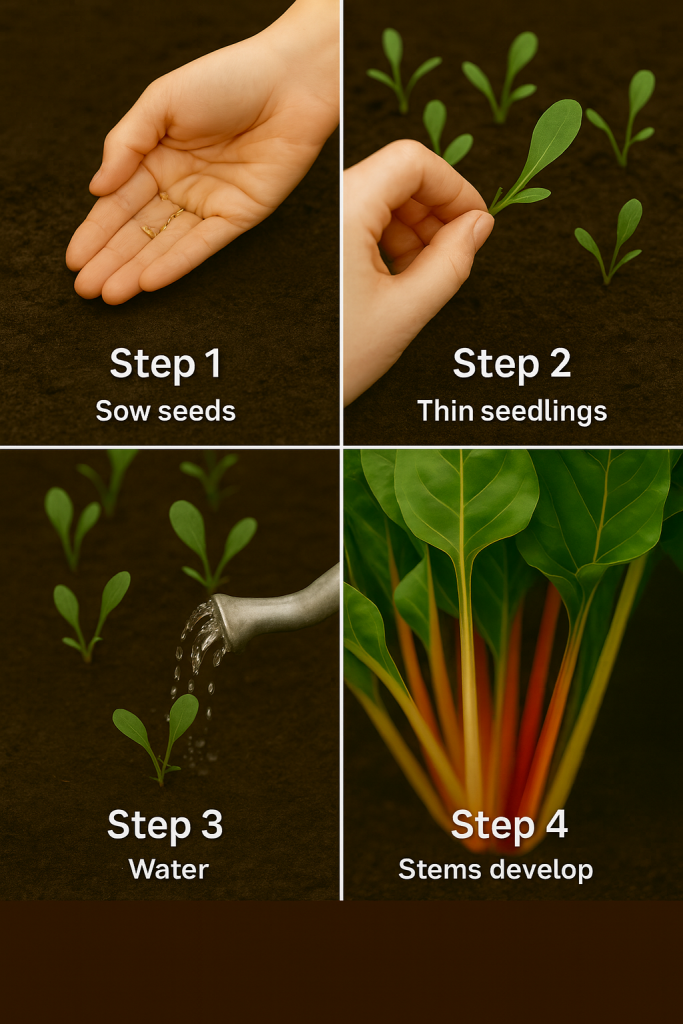
Harvest & Kitchen Use
- Baby leaves: Harvest at 25–30 days → tender for salads.
- Mature leaves: 50–60 days → ideal for sautés, soups, stir-fries.
- Cut-and-come-again: Snip outer leaves, leaving the crown to regrow.
Kitchen Tip: Use rainbow stems like celery—sauté with garlic & olive oil, or pickle for tangy snacks.
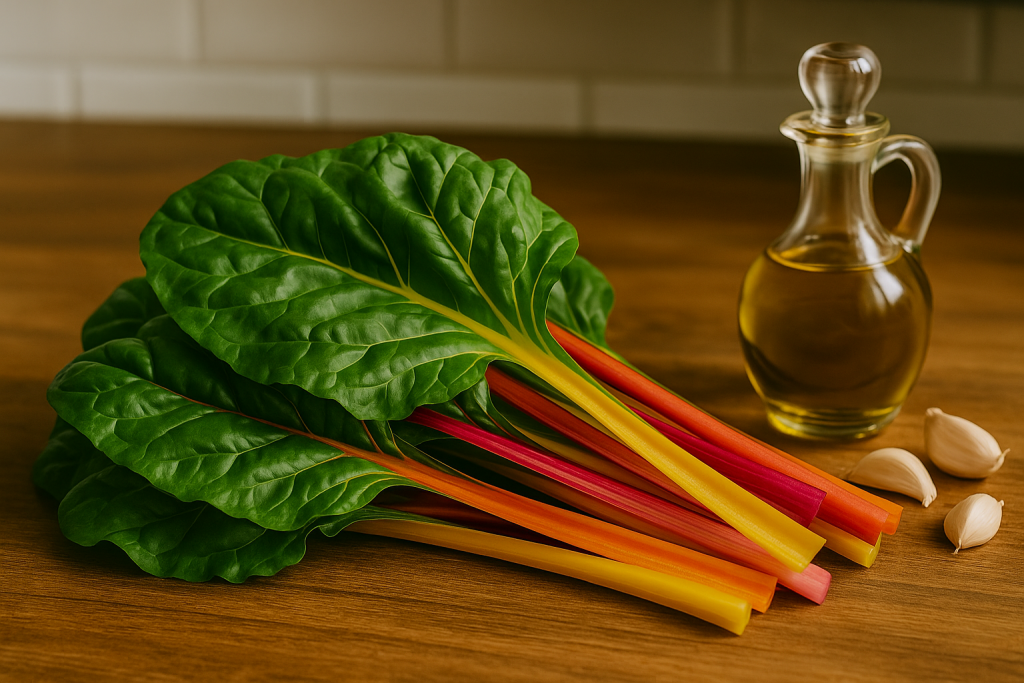
Companion Planting & Balcony Hacks
- Companions: Carrots (mutually beneficial roots), beans (fix nitrogen), and onions (pest deterrent).
- Avoid: Corn or potatoes—they compete for nutrients.
- Balcony trick: Grow chard in decorative pots—its rainbow stems double as ornamental plants.
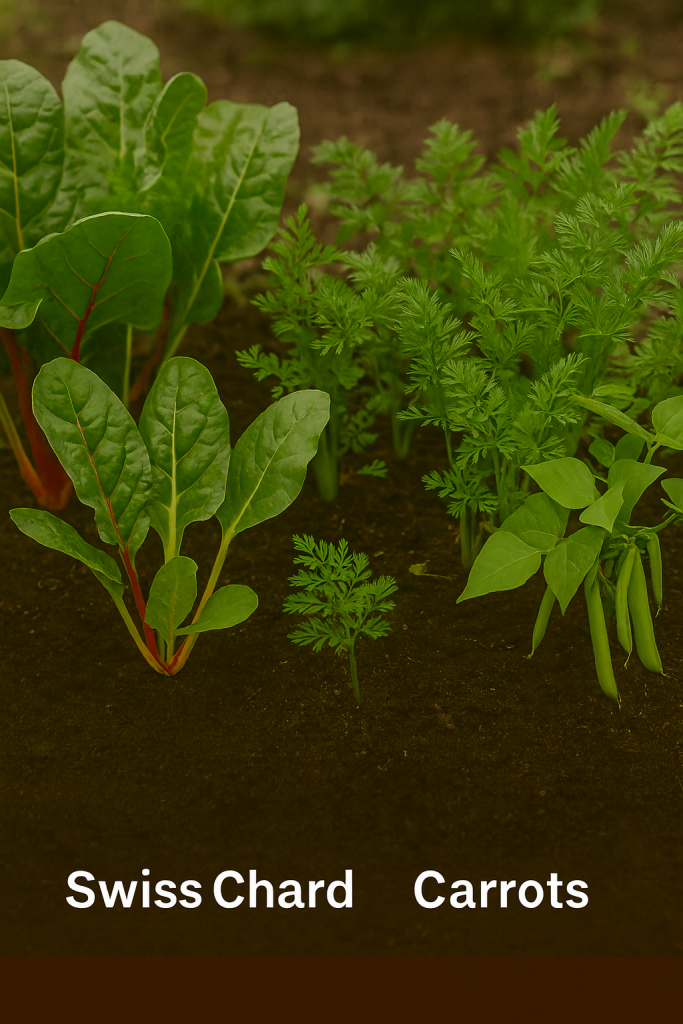
Common Issues & Fixes
Q: Why are my chard leaves turning yellow?
👉 Possible nitrogen deficiency; add compost or liquid feed.
Q: Slugs are eating holes in the leaves.
👉 Use copper tape on pots or scatter crushed eggshells.
Q: My chard looks wilted in summer heat.
👉 Provide afternoon shade and keep soil moist with mulch.
Innovative & Healing Uses
- Balcony color therapy: The rainbow stems provide visual joy, lifting mood during gloomy days.
- Juicing: Blend with apple and lemon for a mineral-rich green juice.
- Container décor: Mix Swiss chard with flowers in balcony planters—it’s edible AND ornamental.
Healing Insight: Swiss chard embodies resilience—thriving in both chill and heat, reminding us that balance is the secret to growth.
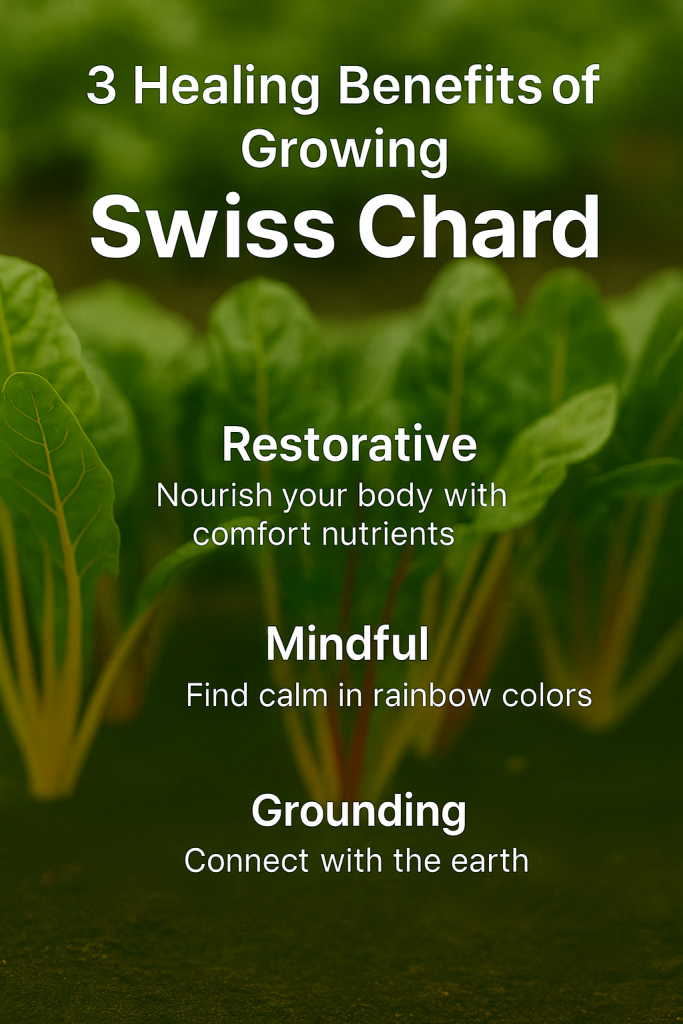
FAQs
Q: Is Swiss chard perennial?
✅ No, but it’s biennial. Usually grown as an annual for leaves.
Q: Can I grow it indoors?
✅ Yes, but give it at least 6 hours of strong light.
Q: How cold can it tolerate?
✅ Down to 20°F (-6°C) with protection.
Keep Your Garden Thriving
Every balcony can be a place of calm and color.
Get your FREE Balcony Garden PDF at greenmuse.io
Discover more gentle gardening tips with @Greenmuse Garden.

